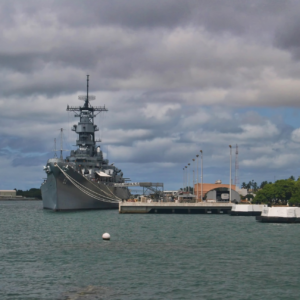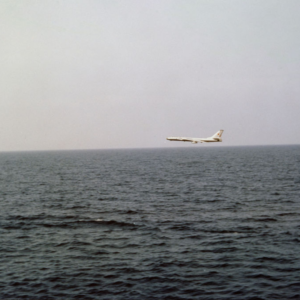Photos show the horrors of Auschwitz, the largest and deadliest Nazi concentration camp, 78 years after its liberation
An aerial view of the Auschwitz II-Birkenau extermination camp on December 19, 2019 in Oswiecim, Poland. Christopher Furlong/Getty Images
It has been 78 years since the Soviet Army liberated Auschwitz, the largest Nazi concentration complex.
First established in 1940, Auschwitz had a concentration camp, large gas chambers, and crematoria.
More than 1.1 million people were murdered at Auschwitz, including nearly one million Jews
It was the greatest tragedy of the Holocaust. In just five years, over one million people were murdered at Auschwitz, the largest and deadliest Nazi concentration camp.
Auschwitz was established in 1940 and located in the suburbs of Oswiecim, a Polish city the Germans annexed. Between 1940 and 1945, it grew to include three main camp centers and a slew of subcamps — each of which were used for forced labor, torture, and mass killing.
An estimated 1.3 million people were deported to Auschwitz during its five-year operation, and approximately 1.1 million were killed.
The terror of Auschwitz finally subsided on January 27, 1945, when the Soviet Army liberated the remaining 7,000 prisoners from the camps.
On the 78th anniversary of this liberation, these photos exhibit the horror and history of Auschwitz.
Auschwitz was established in 1940 in the suburbs of Oswiecim, Poland. During its first year, authorities cleared 15 square miles for the camp.
An aerial view of the Auschwitz II-Birkenau extermination camp on December 19, 2019 in Oswiecim, Poland. Christopher Furlong/Getty Images
Source: The United States Holocaust Memorial Museum
Auschwitz I, the first camp to undergo construction, was initially created for three reasons: to imprison enemies, to use forced labor, and to kill certain groups of people.
The crematorium near gas chamber one at the former Nazi death camp of Auschwitz I in Oswiecim, Poland, Sunday, Dec. 8, 2019. Markus Schreiber/AP
Sources: The United States Holocaust Memorial Museum, Auschwitz‑Birkenau Memorial and State Museum
Construction of the largest camp, Auschwitz II, also called Auschwitz-Birkenau, began in October 1941. Electrified barbed wire divided it into 10 different sections.
The remains of brick stone chimneys of prisoner barracks can be seen inside the former Nazi death camp of Auschwitz Birkenau or Auschwitz II. Markus Schreiber/AP
Sources: Jewish Virtual Library, The United States Holocaust Memorial Museum
Auschwitz-Birkenau’s different sections were for “women; men; a family camp for Roma (Gypsies) deported from Germany, Austria, and the Protectorate of Bohemia and Moravia; and a family camp for Jewish families deported from the Theresienstadt ghetto,” according to the Holocaust Memorial Museum.
Women in the barracks at Auschwitz, Poland, January 1945. Galerie Bilderwelt/Getty Images
Sources: The United States Holocaust Memorial Museum
Inmates were put into poorly structured wooden barracks with 36 bunks each. Five to six prisoners were packed in so over 500 prisoners were in each unit.
Reuters Pictures Archive
Source: The United States Holocaust Memorial Museum
Incoming prisoners who were selected for forced labor received tattoos and had a serial number sewn into their uniforms. Auschwitz was the only concentration camp to do this.
Auschwitz concentration camp survivor Eva Behar shows her number tattoo in her home on December 1, 2014 in London, United Kingdom. Christopher Furlong/Getty Images
Source: The United States Holocaust Memorial Museum
Shortly after construction, Auschwitz-Birkenau became the largest killing center and central location for the extermination of Jews in Europe.
Bodies of prisoners found in Auschwitz, shortly after liberation in 1945. Reuters
Source: Museum of Jewish Heritage
In 1942, two farmhouses just outside the camp were turned into gas chambers.
Christopher Furlong/Getty Images
Source: United States Holocaust Memorial Museum
But as Auschwitz-Birkenau became a central location for mass killing, these gas chambers were too small. Four new chambers were built between March and June 1943, each containing a disrobing area, gas chamber, and crematory ovens.
Shoes of victims exterminated at Auschwitz. Rolf Vennenbernd/picture alliance via Getty Images
Source: United States Holocaust Memorial Museum
As millions of people were murdered, mounds of eye glasses, razors, shoes, and other belongings were left behind.
Remains of glasses from people exterminated at Auschwitz. Pawel Ulatowski/Reuters
In 1942, Auschwitz III, also known as Buna or Monowitz, opened near the town of Monowice to house more forced laborers.
An ariel picture taken of Auschwitz barracks taken on December 15, 2019 in Oswiecim, Poland. Pablo GONZALEZ / AFP via Getty Images
Source: United States Holocaust Memorial Museum
Forty-four subcamps with different specializations were established at Auschwitz between 1942 and 1944. The Nazis made prisoners work on large farms, in coal mines, in weapons production — basically anything the German military needed for war.
A photo of women deemed fit for work, taken in May 1944 in Auschwitz. AFP via Getty Images
Source: United States Holocaust Memorial Museum
Between 1940 and 1945, an estimated 1.3 million people were sent to Auschwitz. Approximately 1.1 million were killed.
Cadavers of women and Children who died in cold weather at Auschwitz. Keystone-France/Gamma-Keystone via Getty Images
Source: Museum of Jewish Heritage
In January 1945, before Soviet forces could reach the camps for liberation, nearly 60,000 people were forced to march west, and thousands more were killed.
Soviet soldiers with survivors of Auschwitz in 1945. REUTERS:HO AUSCHWITZ MUSEUM
Source: The United States Holocaust Memorial Museum
The terror finally subsided on January 27, 1945, when the Soviet Army reached the gates of Auschwitz.
Soviet soldiers arriving at the gates of Auschwitz in 1945. REUTERS:HO AUSCHWITZ MUSEUM REUTERS
Source: The United States Holocaust Memorial Museum
When Soviet soldiers arrived, only between 6,000 and 7,000 prisoners remained. The majority of them faced starvation, illness, and death.
Sovfoto/Universal Images Group/Getty Images
Source: The United States Holocaust Memorial Museum
Available records indicate that when the soldiers arrived, at least 700 youth prisoners were still at the camp, half of whom were Jewish.
Children who have lived to be liberated by the Red Army from the Auschwitz concentration camp on January 27, 1945. TASS via Getty Images
Source: Auschwitz-Birkenau Memorial Museum
In many cases, the liberated children were malnourished, severely weak, vitamin deficient, and diseased. Of 180 children examined after liberation, 40% had tuberculosis.
Jewish children, survivors of Auschwitz, with a nurse behind a barbed wire fence, Poland, February 1945. Galerie Bilderwelt/Getty Images
Source: Auschwitz-Birkenau Museum
Immediately after liberation, many of the children were sent to hospitals organized by the Soviet army and the Polish Red Cross.
Holocaust survivor Rachel Rubin shows a photograph of herself as a 14-year-old girl shortly after her liberation in 1945. Julian Stratenschulte/picture alliance via Getty Images
In 2016, a group of children who survived the horrors of Auschwitz met to take their photo together.
81-year-old Paula Lebovics, 79-year-old Miriam Ziegler, 85-year-old Gabor Hirsch and 80-year-old Eva Kor pose with the original image of them as children taken at Auschwitz at the time of its liberation on January 26, 2015 in Krakow, Poland. Ian Gavan/Getty Images
In total, 6 million Jews were killed during the Holocaust. One-sixth of these exterminations happened at Auschwitz alone.
Photographs are displayed at the Birkenau Museum, December 10, 2004, of the many faces of the men, women and children at the Auschwitz II. Scott Barbour/Getty Images
Source: United States Holocaust Memorial Museum
To commemorate this grave tragedy, world leaders met in Israel in 2020 to mark 75 years since the camp’s liberation.
Russia’s President Vladimir Putin arrived in Israel on a working visit to attend celebrations marking the 75th anniversary of the liberation of Auschwitz. Mikhail Metzel/TASS via Getty Images
On January 27, 2023, Holocaust survivors gathered in Oswiecim, Poland, to attend a ceremony marking the 78th anniversary of the liberation of Auschwitz.
Holocaust survivors wearing striped scarves attend a ceremony during 78th Anniversary Of Auschwitz – Birkenau Liberation and Holocaust Remembrance Day. Beata Zawrzel/NurPhoto via Getty Images
Holocaust survivors and former Auschwitz inmates were joined by world leaders at a wreath-laying and candle ceremony in front of the Death Wall to remember the thousands who died at the former Nazi concentration complex.
The flag of Israel and candles are seen during the 78th Anniversary Of Auschwitz – Birkenau Liberation ceremony and Holocaust Remembrance Day in Brzezinka, Poland, on January 27, 2023. Beata Zawrzel/NurPhoto via Getty Images
Editor’s note: This list was first published in January 2020 and has been updated to reflect recent developments.
News
How Hezbollah & Israel counter-attack after the Lebanon Explosion
How Hezbollah & Israel counter-attack after the Lebanon Explosion This is how Hezbollah responded to Israel after the sophisticated pager and walkie-talkie explosions, which occurred across Lebanon. They retaliated by launching guided missiles for the first time. The three strikes…
[MUST WATCH] In pictures: The deadliest day in Lebanon in nearly a year of conflict
In pictures: Israel strikes hundreds of Hezbollah targets in Lebanon Israel attacked hundreds of Hezbollah targets on Monday in airstrikes, making it the deadliest day in Lebanon in nearly a year of conflict. Smoke billows over southern Lebanon following Israeli…
BREAKING NEWS: US sends more troops to Middle East as violence rises between Israel and Hezbollah
US sends more troops to Middle East as violence rises between Israel and Hezbollah Violence between Israel and Hezbollah is raising risk of a greater regional war. WASHINGTON — The U.S. is sending a small number of additional troops to the…
Easy Company Facts Even Hardcore Fans of ‘Band of Brothers’ Don’t Know
Photo Credit: HBO / Getty Images HBO’s 2001 miniseries, Band of Brothers, has continued to gain popularity in the decades since its release. This is partly due to later generations having greater access to the series – in particular, via…
Mighty MO – USS Missouri (BB-63) Video and Photos
There are three other ships in the United States Navy which were named after the state of Missouri besides the battleship USS Missouri (BB 63), and although she became associated with the history of the Japanese raid at Pearl Harbor, she…
A Soviet TU-16 medium jet bomber flies past the anti-submarine warfare support aircraft carrier USS Essex
That Time A Soviet Tu-16 Badger Crashed Into The Sea After Buzzing A U.S. Aircraft Carrier A screenshot from the video filmed aboard USS Essex shows the Tu-16 Badger flying very low close to the aircraft carrier. Low pass with…
End of content
No more pages to load











